Gladiolus "Priscilla": description, planting and care
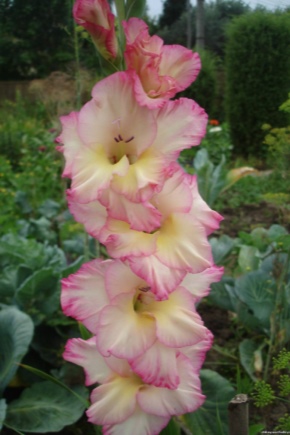
Among gladioli, there are about 8000 varieties. One of the most popular is "Priscilla", it is loved for its large, original buds. Just one branch is enough to create a beautiful bouquet.
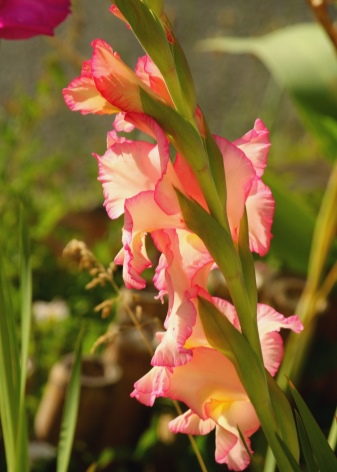
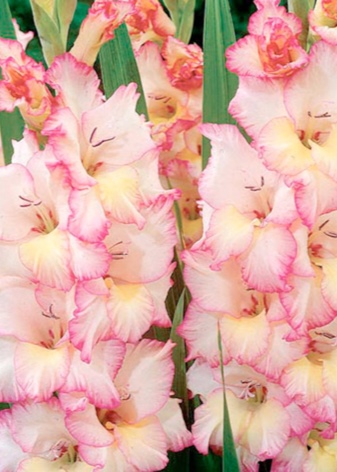
Description of the variety
Gladiolus "Priscilla" is distinguished by large triangular-shaped flowers. Velvet petals have corrugated edges and a gradient color - from white in the middle to pink or crimson at the tips.
The flower is powerful, tall, up to 15 buds on one peduncle. To prevent the gladiolus from breaking, it is necessary to tie it to a support.

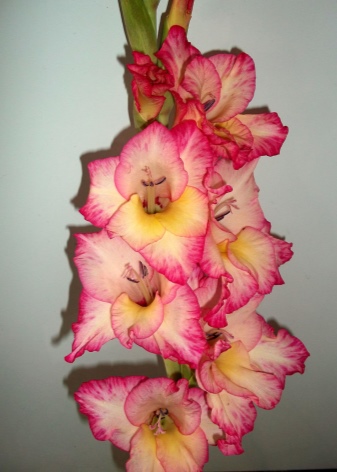
Blooms after planting in 2.5 months. In regions with cool and temperate climates, this period increases to 85-90 days. The plant is capricious to care for.
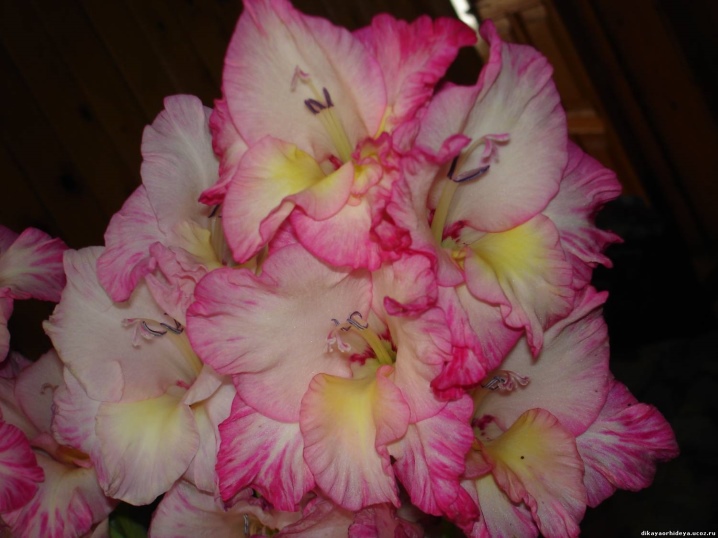
Landing
Adult bulbs must be prepared a month before planting, children - 2 weeks. They should be seated separately, including in the ground. Adult gladioli have a more powerful root system and will begin to take nutrients from the "young".
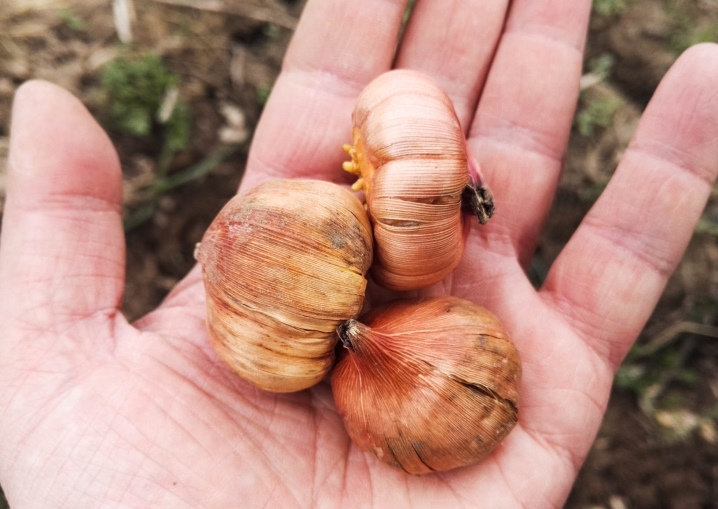
The bulbs should be peeled and immersed in a solution of potassium permanganate for a few minutes. (0.5 g of potassium permanganate per 1 liter of water). This will protect them from thrips and fungus. Then drop in a box and leave in a well-lit place.
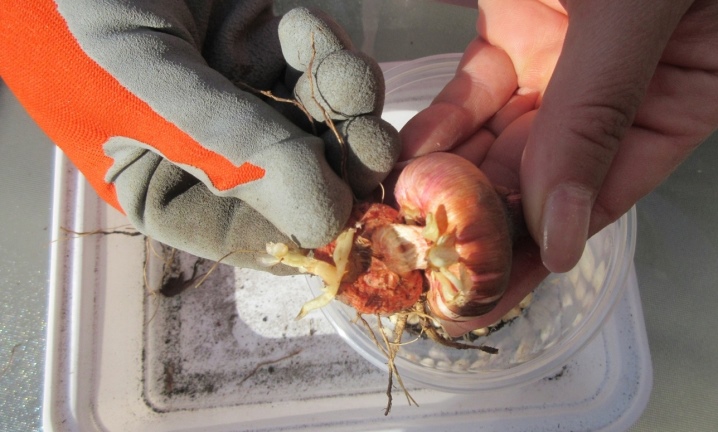
For gladioli, it is recommended to prepare an area in a sunny place, but without an open draft. It is best to plant them in the old flower bed of zinnias, dahlias, marigolds or a former bed of garlic, onions, legumes.

In no case should be planted in the ground where asters, nightshades and root crops grew before.
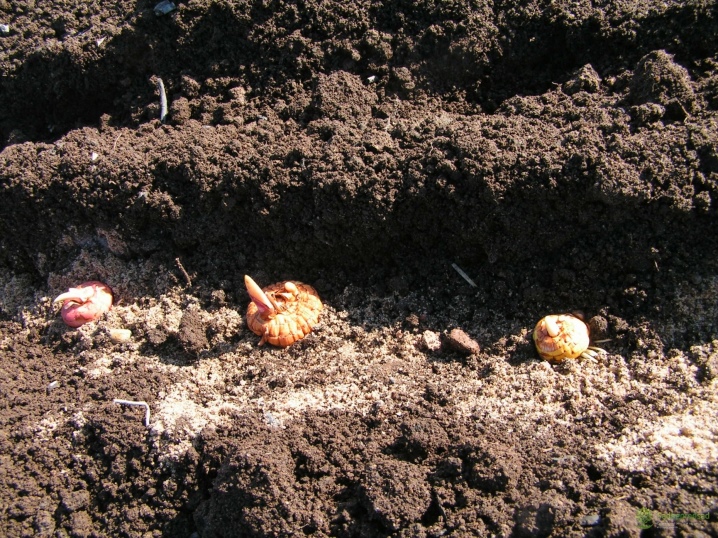
The land must be well loosened up to 40 cm in depth, fertilizer and mulch must be applied. If the soil is too acidic, then add crushed shells from raw chicken eggs (boiled will not work) or chalk... On alkaline soil, the plant will hurt. Slightly acidic soil is recommended. Of the fertilizers, it is imperative to add nitrogen - they are responsible for active growth. At the same time, it is important not to overdo it, otherwise gladiolus will give a lot of tops and will bloom badly.
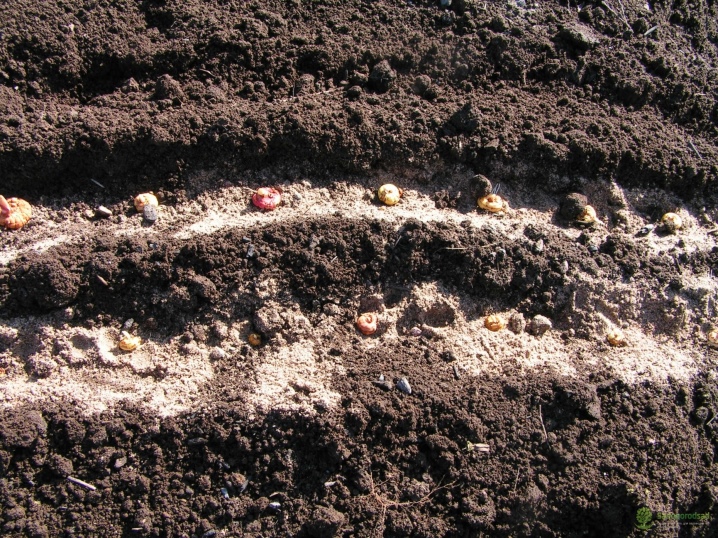
The bulbs are planted to a depth of 10 cm at a distance of 10-15 cm from each other. As already mentioned, adults and baby bulbs are planted in separate rows.
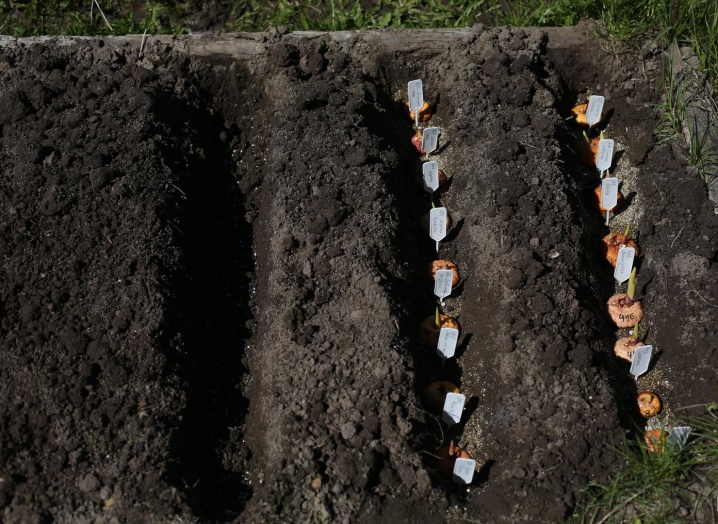
How to care?
As soon as the first sheets of "Priscilla" appear, in addition to nitrogen fertilizers, it is necessary to apply potash fertilizers. They are responsible for metabolism, increase resistance to low temperatures, and strengthen the immune system. The gladioli should be fed regularly, 2 times a month.
When the 6th leaf appears, phosphorus fertilizers are added to the top dressing. It is phosphorus that is responsible for bud formation and flowering. With its lack, the flower stalks are weak, there are few buds, and they bloom poorly. As soon as the plant blooms, you should stop applying nitrogen fertilizers.
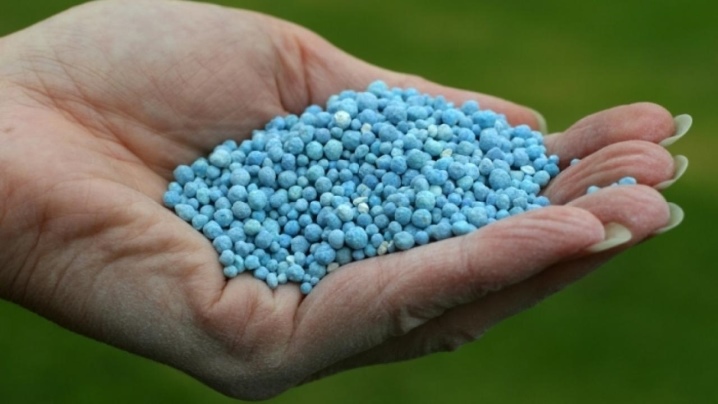
It is better to fertilize gladioli in the evening or early in the morning, when there is no active sun, followed by mandatory watering. For better assimilation of top dressing, it is necessary to loosen the soil between the rows every decade. Watering itself is sufficient once a week or every 2-3 days in hot weather.
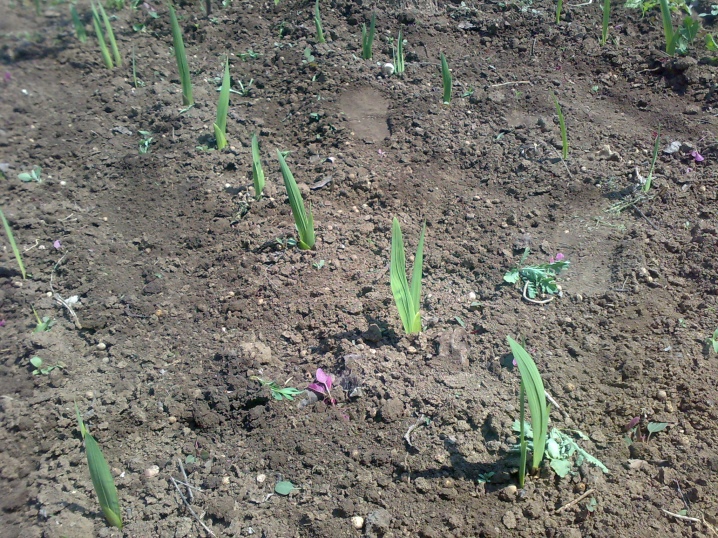
If it rains after feeding, then a week later fertilizers are reapplied. Sediments wash away nutrients or carry them deep into the soil, where gladiolus rhizomes cannot reach.
In early September, as soon as the gladioli have faded, it is necessary to cut the flower stalks. During this period, babies are formed, and greens can draw off nutrients. Phosphorus fertilizers should be excluded and nitrogen fertilizers returned.
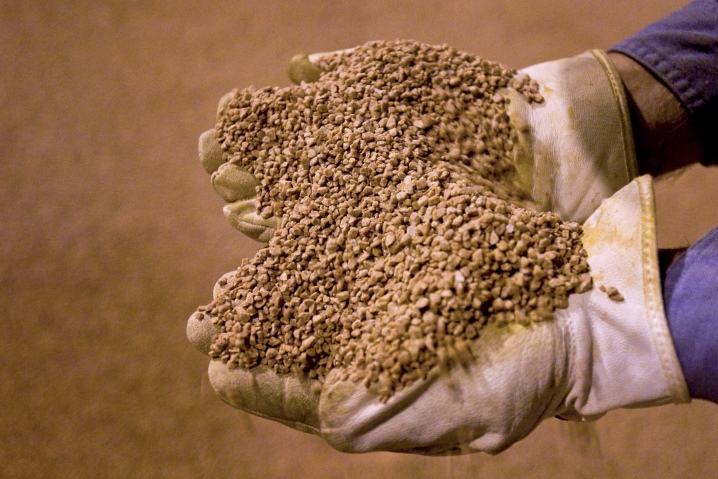
Priscilla gladiolus bulbs do not winter outdoors.Before a cold snap, they must be dug up, dried and stored throughout the winter in a dark, cool place. In the spring, it is recommended to plant the plant in a new area, leave the maximum for the second year.
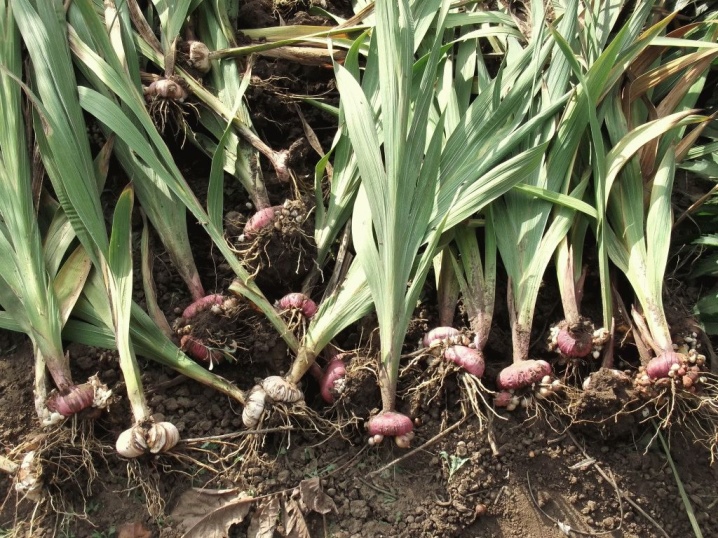
Reproduction
Gladioli propagate by bulbs. There is also a seed method and dividing the bulb, but they are practically not used. With seed propagation, breeders do not guarantee that a flower with the same set of genes will turn out. This is true for hybrid varieties, which include "Priscilla". But for the sake of experiment, you can try.

In the first year, seeds are planted, which should grow into small bulbs. Then they are dug up and dried. In the second year, they are planted again so that they turn into full-fledged bulbs. And only in the third year will gladioli bloom. It turns out that the seed method is lengthy and does not give a guaranteed result.

Dividing the bulbs is also rarely used, since there is a risk of spoiling the planting material. Therefore, raising children is the fastest and most effective breeding option, in which all the characteristics of the variety are preserved.

In late August - early September, tubercles begin to form at the base of a mature bulb. Therefore, the ripe bulbs should be dug out carefully. Babies are separated, dried and stored separately.
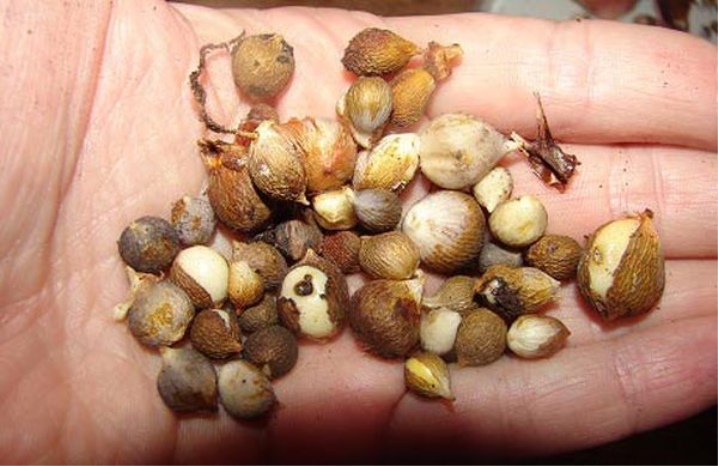
Examples in landscape design
Since the Priscilla gladioli are tall, and the stems are even, they make beautiful corridors. Plants can be planted along garden paths or made into hedges.
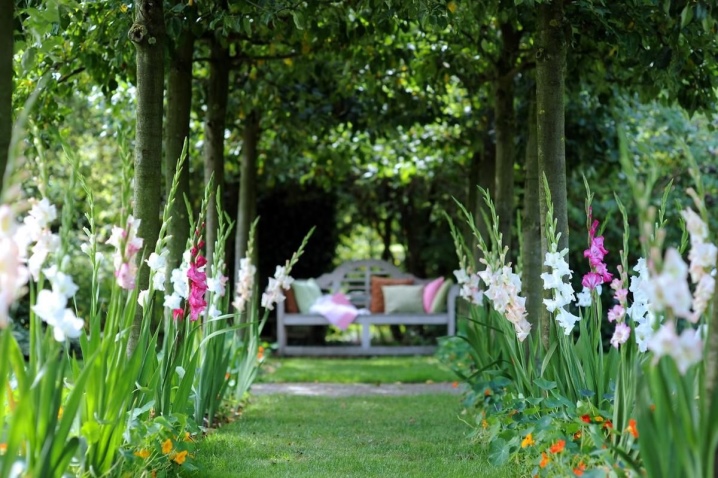
Gladioli in flower pots look original and splendid. The latter should be deep so that the bulbs are not cramped.
If you create flower islands, then gladioli are placed in the center of the flower bed or in the background. They feel great next to perennials, in particular with dahlias.
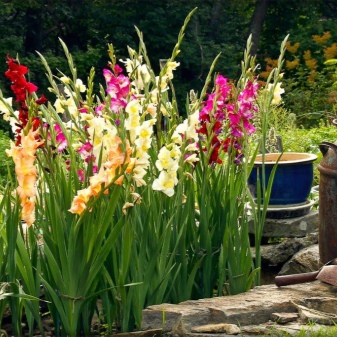
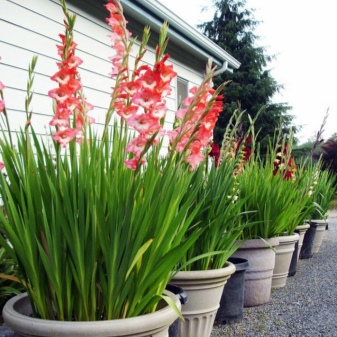
See the video below for the Priscilla gladiolus.







































































































The comment was sent successfully.